谷澤紗和子 TANIZAWA Sawako
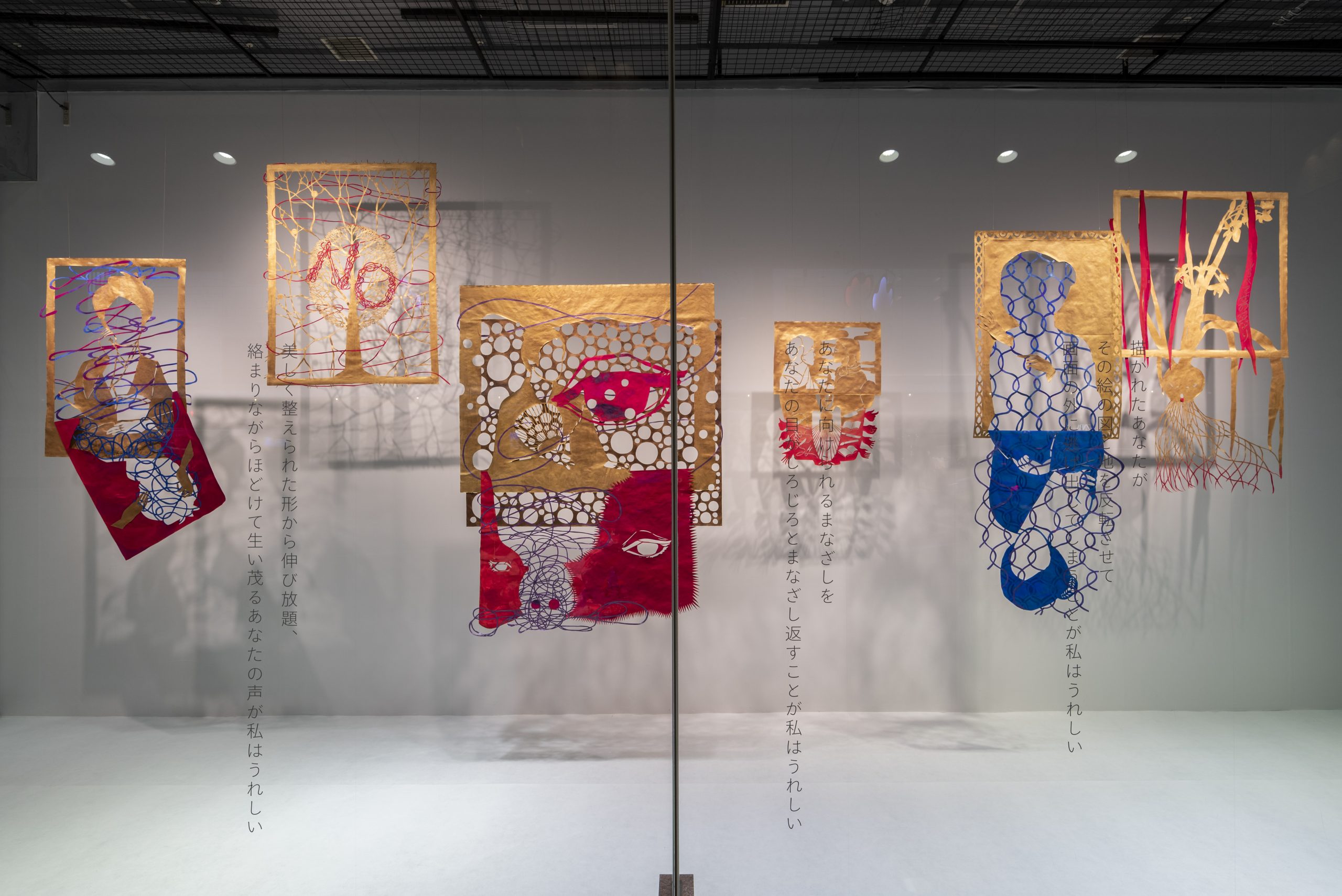
展示順(左から)
《女性像の演習_O》 2024年 アクリル絵具、紙/《わたしはすべてのあなた》 2024年 アクリル絵具、紙/《女性像の演習_K.A.K》 2024年 アクリル絵具、紙/《二つの顔》 2024年 アクリル絵具、紙/《女性像の演習_K》 2024年 アクリル絵具、紙/《水仙》 2024年 アクリル絵具、紙
高島屋×京都市立芸術大学「NEW VINTAGE 2.0」特別展示、2024-25年、髙島屋髙島屋京都店1階入口ウインドウ 撮影:岡はるか
Displayed from left:
Studies of Female Figures_O, 2024 Acrylic on paper/ I Am All of You, 2024 Acrylic on paper/ Studies of Female Figures_K.A.K, 2024 Acrylic on paper/Two Faces, 2024 Acrylic on paper/Studies of Female Figures_K, 2024 Acrylic on paper/Narcissus, 2024 Acrylic on paper
Takashimaya x Kyoto City University of Arts, “NEW VINTAGE 2.0” special exhibition, 2024-25, Takashimaya Kyoto store 1st floor entrance window, Photo by OKA Haruka.
谷澤紗和子
TANIZAWA Sawako
1982年、大阪市生まれ。京都市に在住、活動。
「妄想力の解放」や「女性像」をテーマにした作品を制作する。ジェンダーへの関心を元に、女性表現者に対する固定的な評価を問い直す。切り紙、インスタレーション、作陶、絵画など、いくつかの表現手法を横断、交差させながら、作品制作を行う。小説家やアーティストとの共同制作にも取り組んでいる。
京都市立芸術大学准教授。
・・・・・・・・・・・・・・・・・
アーティスト・ステートメント
「妄想力の拡張」をテーマに、生と死、愛、痛み、などの広大な妄想/想像力が解放されることを目指し、そのための装置として作品を創っています。このテーマは、新自由主義が人間の自由な想像や妄想のための時間を奪う。ということへの反発に由来しています。
また、フェミニストとして、社会に空気のように蔓延する差別的な価値観についての気づきになるような制作態度を示したいと考えています。
私にとって切り紙は、「美術」という、白人男性主体の価値観を礎にした強靭な制度の、外にあるものです。
紙を切ることで造型された創作物は、世界中にあります。東アジアにおいて切り紙は、中国大陸から朝鮮半島を経由して日本列島に届いた、たくさんの文化のうちの一つです。中国の剪紙(せんし)は、玄関や窓などに飾られる民間の工芸品です。動物や花などの様々な紋様によって、寓意が記されています。農村の女性にとっての花嫁修業とされていました。日本では染織の型紙や、神道や民間の儀式空間で用いられてきました。メキシコでは、「死者の日」という祭日に、パペルピカド(穴をあけられた紙)と呼ばれる極彩色の切り紙が街中の空間を彩ります。そして、デンマークの童話作家として有名なアンデルセンは、子どもたちの楽しみのために、自作の童話を読み聞かせながら、即興で様々な切り紙を切って見せました。今も美術館に残っているものもありますが、多くはその場の鑑賞者である子どもたちに贈られたそうです。
切り紙の造型は、特権的な技術や空間を必要としない、弱さと柔軟さを合わせ持った豊かな存在。また、生や死にまで及ぶ広大な空想について物語ることに長け、所有や資本の概念とは違う価値を表すことができるものだと感じています。
谷澤紗和子
TANIZAWA Sawako
Born in Osaka in 1982, Lives and works in Kyoto.
TANIZAWA Sawako creates works with her focus on the themes of “liberation of imagination” and “images of women.” Based on her interest in gender, she reexamines the fixed values concerning women artists. She produces her works through traversing and crossing over several mediums of expression, such as paper cutting, installation, ceramics and painting. She also collaboratively works with novelists and other artists.
Currently Associate Professor of Kyoto City University of Arts
ーーーーーーーーーーーーーーーーーーーーーーーーーーーーーーーーーーーー
Artist Statement
With the theme “the expanding of imagination,” I create works as devices with the aim of unleashing an extensive delusion/imagination regarding such subjects as life and death, love, and pain. This theme derived from my opposition toward neoliberalism, which deprives people of the time to freely imagine and have wild ideas.
In addition, as a feminist, I aspire to reveal an artistic attitude that can raise awareness concerning the discriminative sense of value that is as rampant in society as air.
I consider paper cuttings to be on the outside of so-called “fine art,” which is a rigid system that is founded on male-dominant, Caucasian values.
Creative objects formed through cutting paper are found throughout the world. In East Asia, paper cutting is one of the many cultural imports that was brought to the Japanese archipelago from mainland China, via the Korean peninsula. The Chinese cutout called “Jianzhi” is a traditional folk art used to decorate doors and windows. It conveys allegorical meanings through using various patterns, such as animals and flowers. In China, women in rural areas were expected to learn paper cuttings to prepare for marriage. In Japan, it has been used for textile stencils, as well as in ritual spaces for Shinto and traditional ceremonies. In Mexico, on the “Day of the Dead” festival, rich-colored cutouts referred to as “papel picado” (lit. punched paper) adorn spaces throughout the city. In Denmark, the famous author of fairy tales Hans Christian Anderson amused children by telling his stories, while also creating a variety of impromptu paper-cuts. Some of them remain in art museums today, but many were given to the children who were the audience at his story-telling sites.
A form created by cutting paper is a rich entity that possesses both vulnerability and flexibility, and which does not need any superior techniques or a particular venue. In addition, it excels in narrating a vast range of imagination, extending from life to death. Thus, this medium is able to express a value different from concepts such as ownership and capital.
TANIZAWA Sawako
(Translated by NANPEI Taeko)
谷澤紗和子についての新しい情報は、作家のウエブサイト、SNSをご覧ください。
Please refer to the following the artist’s website and social media pages.
https://www.tanizawasawako.com/
Instagram
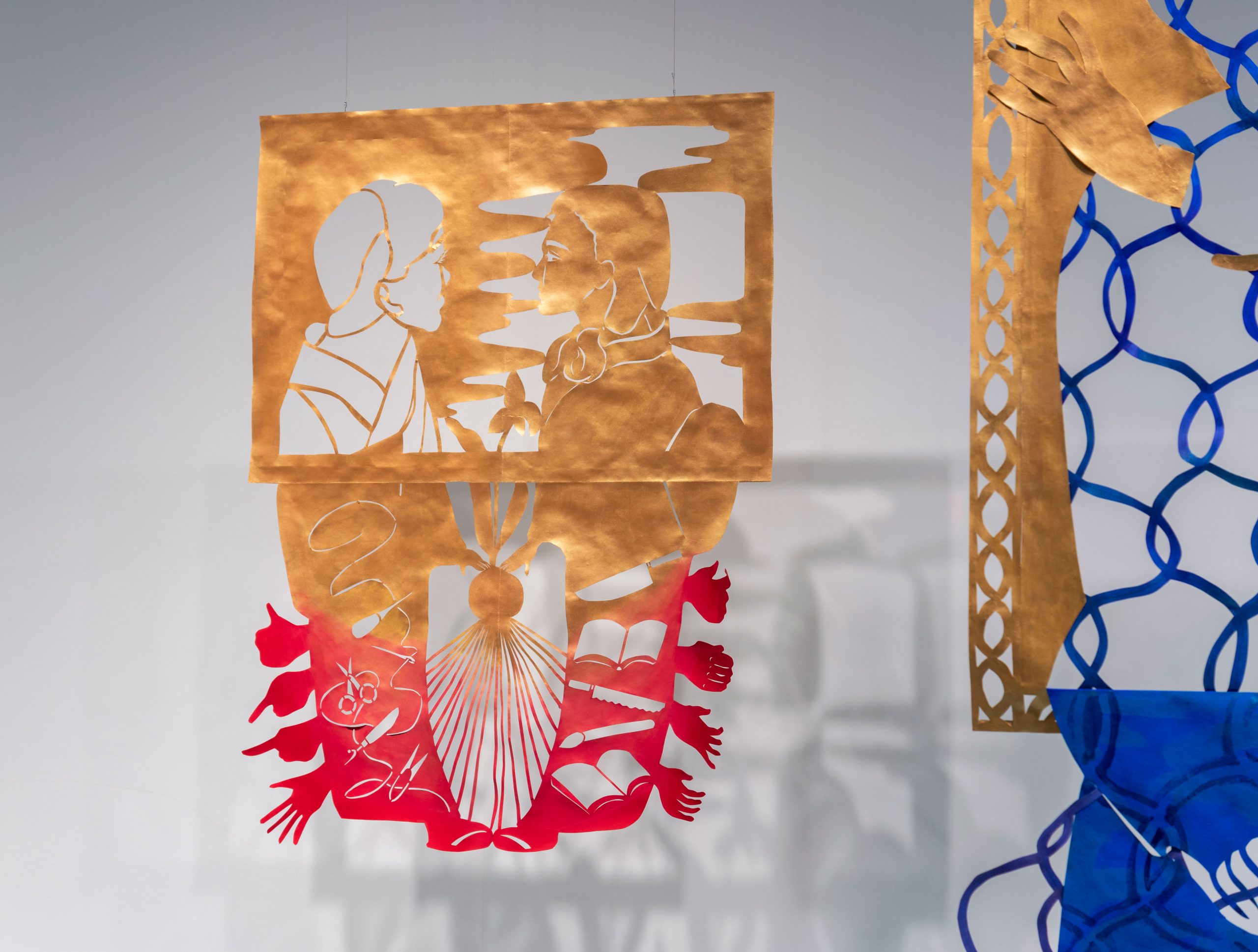
《二つの顔》 2024年 アクリル絵具、紙、77×57cm
Two Faces, 2024, Acrylic on paper, 77×57cm
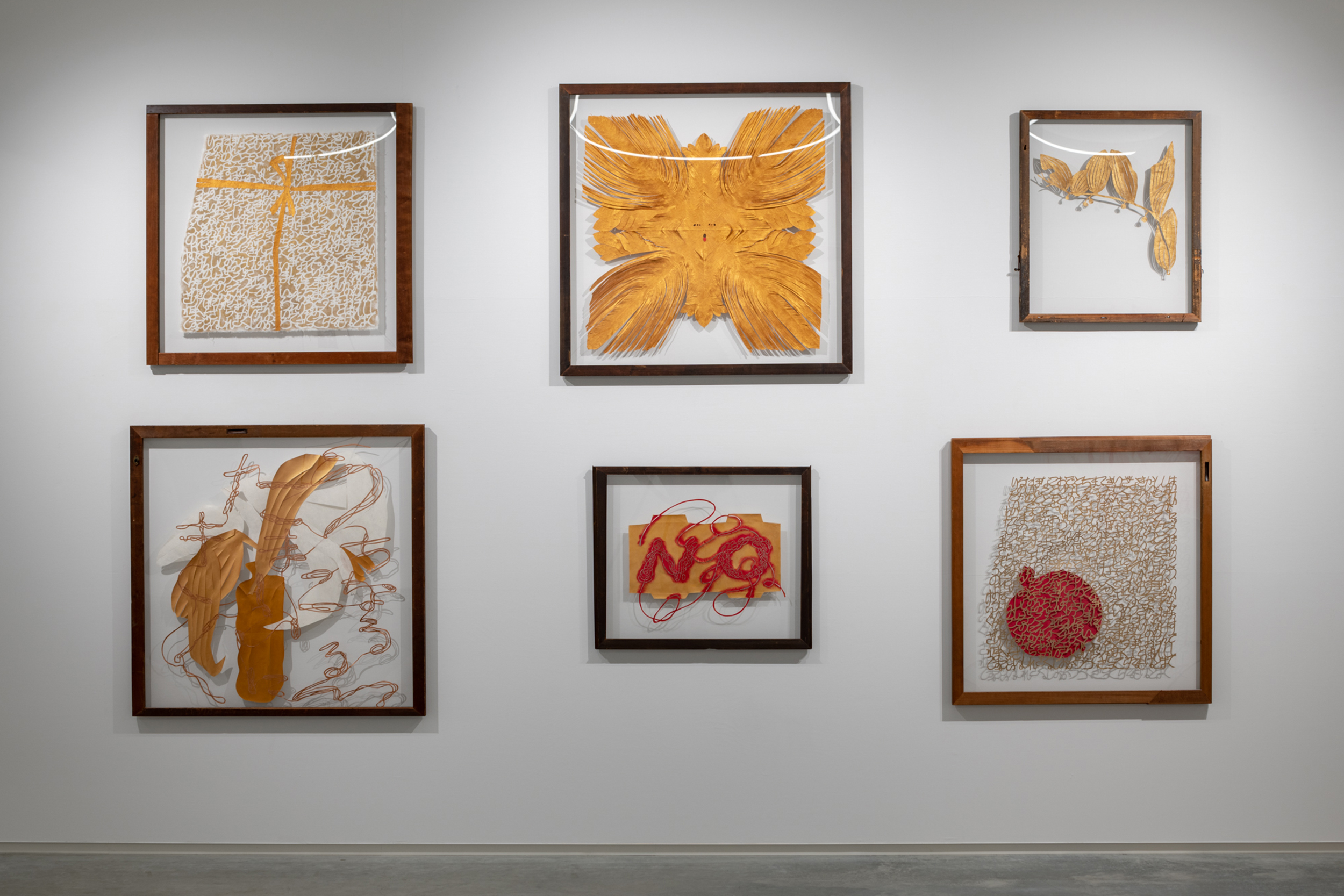
《はいけい ちえこ さま》シリーズ
素材:アクリル、紙、解体された家屋の廃材、アクリル板 制作年:2022年
※展示順(左上から右へ)
《はいけい ちえこ さま -土産-》86cm × 88cm × 5cm
《はいけい ちえこ さま -太陽-》96cm × 97cm × 5cm
《はいけい ちえこ さま -鈴蘭-》70cm × 50cm × 5cm
《はいけい ちえこ さま -うちなるこゑたましいにきく-》96cm × 96cm × 5cm
《はいけい ちえこ さま -NO-》60cm × 72cm × 5cm
《はいけい ちえこ さま -柘榴-》86cm × 88cm × 5cm
「越境ー収蔵作品とゲストアーティストがひらく視座」展、2022年、京都精華大学ギャラリーTerra-S 撮影:表恒匡 画像提供:京都精華大学ギャラリーTerra-S
Dear Chieko Series
Materials: Acrylic, paper, dismantled house debris, acrylic board Year: 2022
Displayed from top left to right:
Dear Chieko – Souvenir, 86cm × 88cm × 5cm
Dear Chieko – Sun, 96cm × 97cm × 5cm
Dear Chieko – Lily of the Valley, 70cm × 50cm × 5cm
Dear Chieko – Listening to the Voice Within the Soul, 96cm × 96cm × 5cm
Dear Chieko – NO, 60cm × 72cm × 5cm
Dear Chieko – Pomegranate, 86cm × 88cm × 5cm
“Crossing Borders – Perspectives Opened by Collection Works and Guest Artists”, 2022, Kyoto Seika University Gallery Terra-S, Photo by OMOTE Nobutada, Photo courtesy: Kyoto Seika University Gallery Terra-S
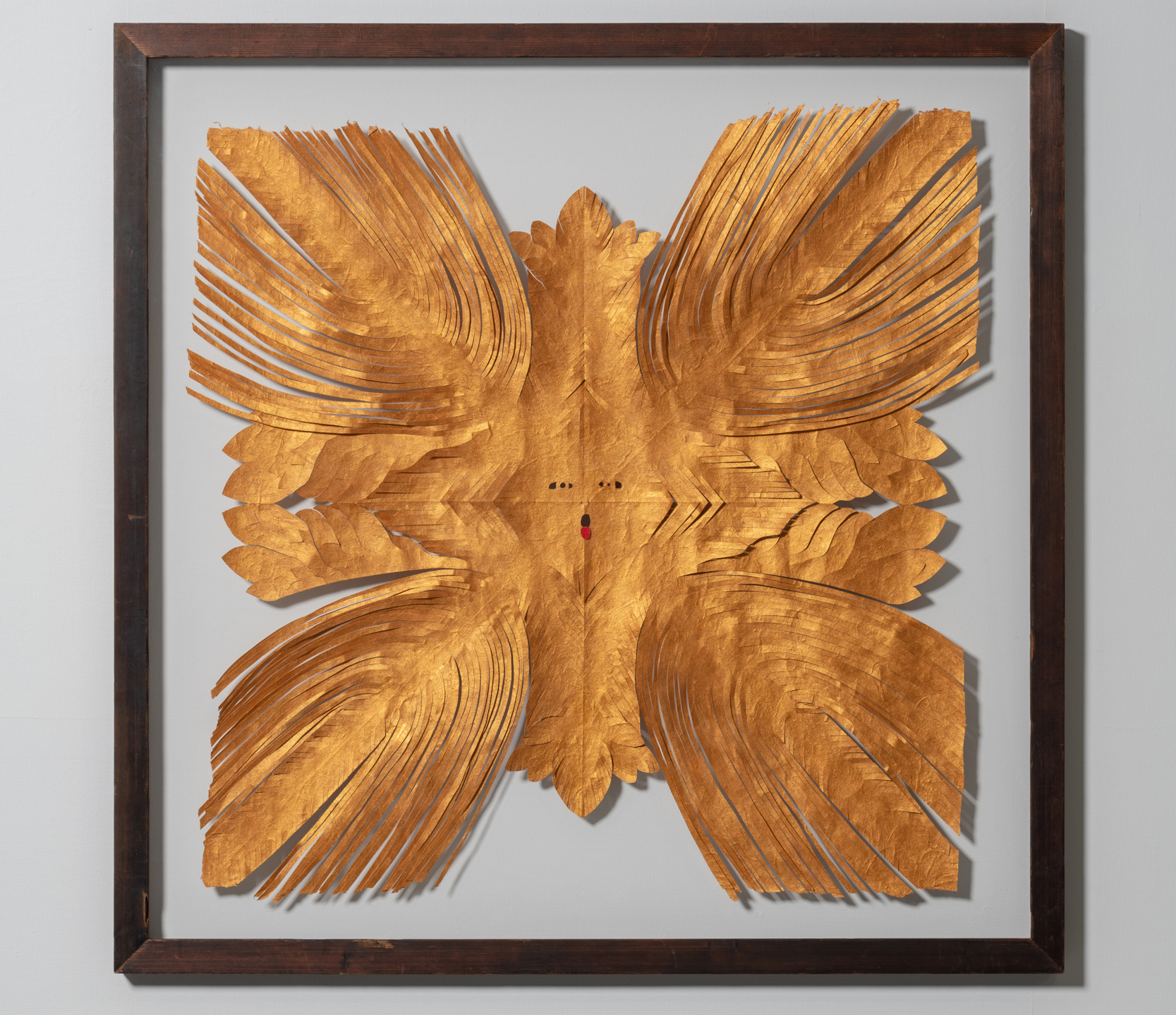
《はいけい ちえこ さま -太陽-》2022年 アクリル、紙、解体された家屋の廃材、アクリル板 96cm × 97cm × 5cm
Dear Chieko – Sun, 2022, Acrylic, paper, dismantled house debris, acrylic board, 96cm × 97cm × 5cm
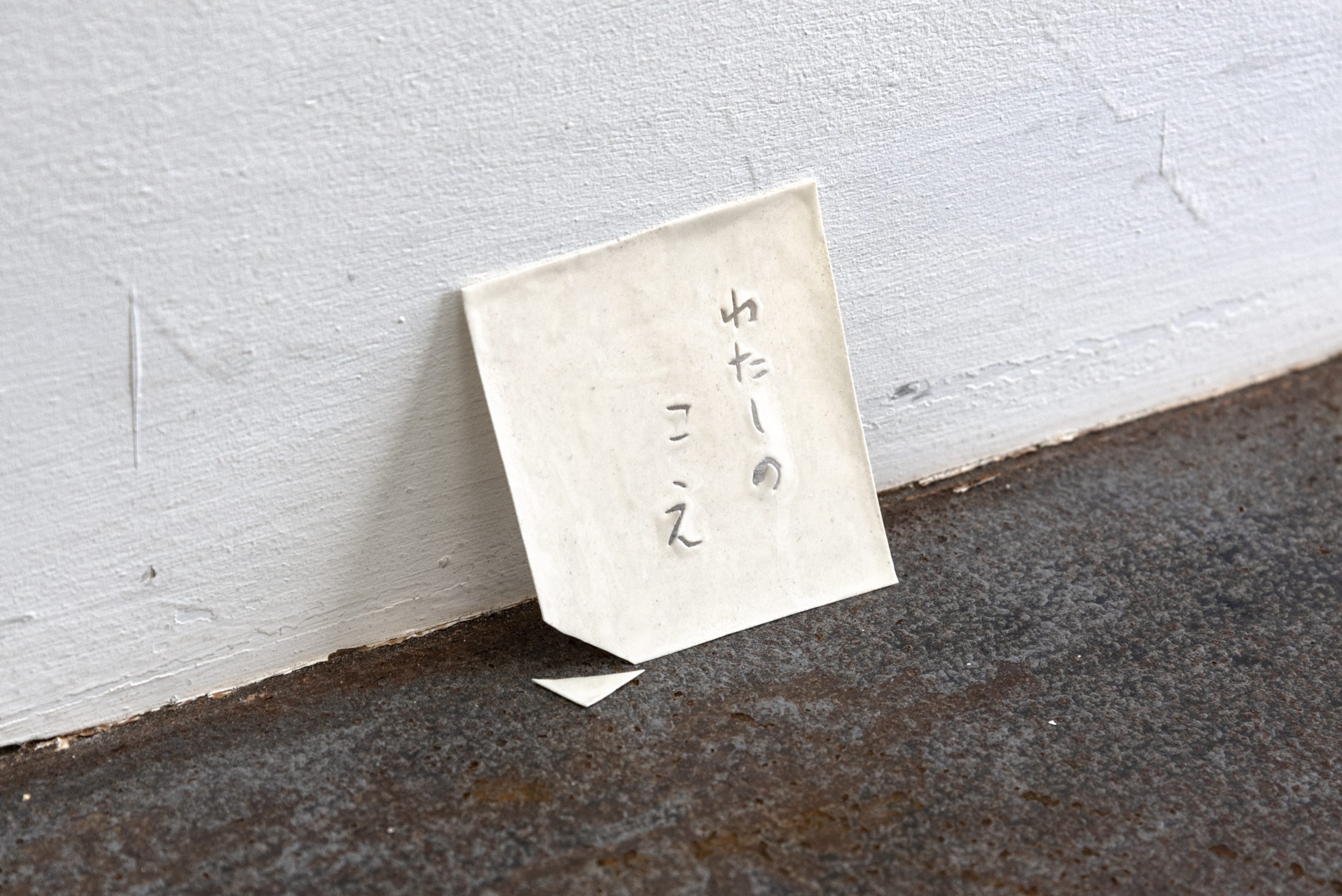
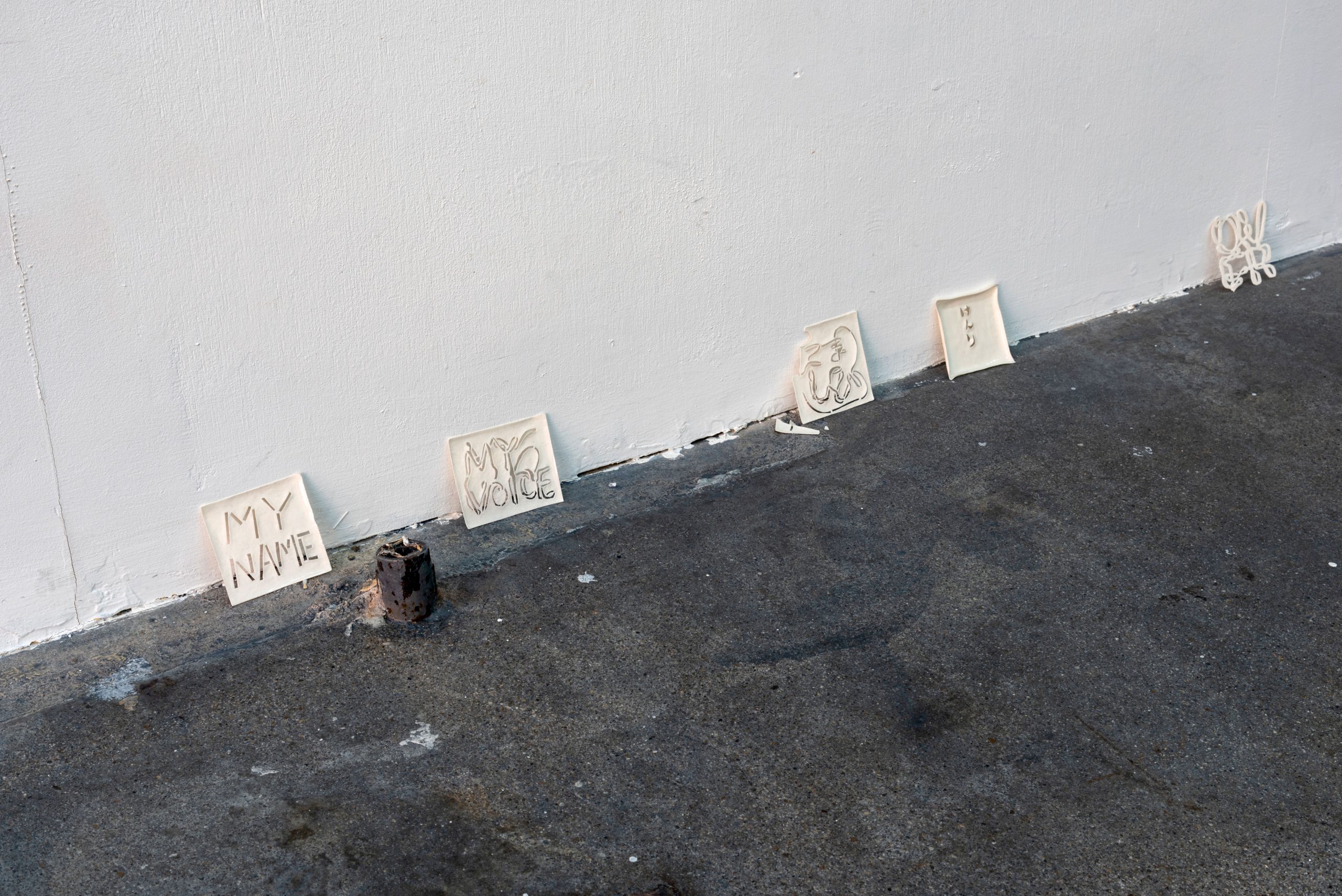
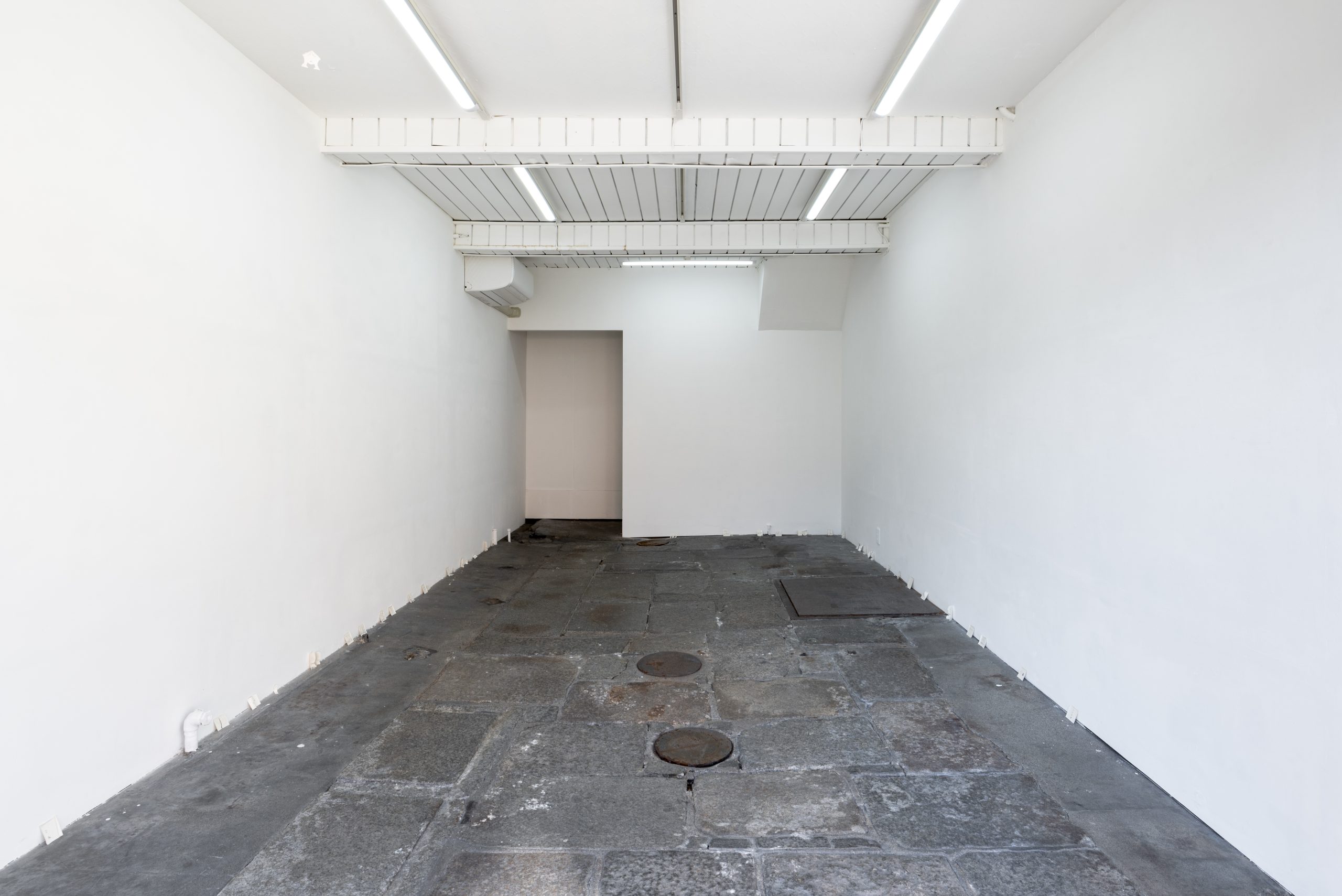
《ちいさいこえ》 2023 陶紙 インスタレーション
個展「ちいさいこえ」FINCH ARTS、撮影:岡はるか
Small Voices, 2023, Ceramic paper, Installation
solo exhibition “Small Voices” , FINCH ARTS, Photo by OKA Haruka

